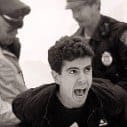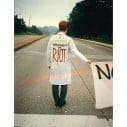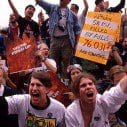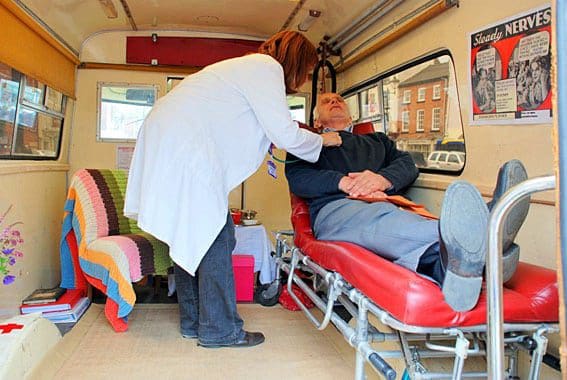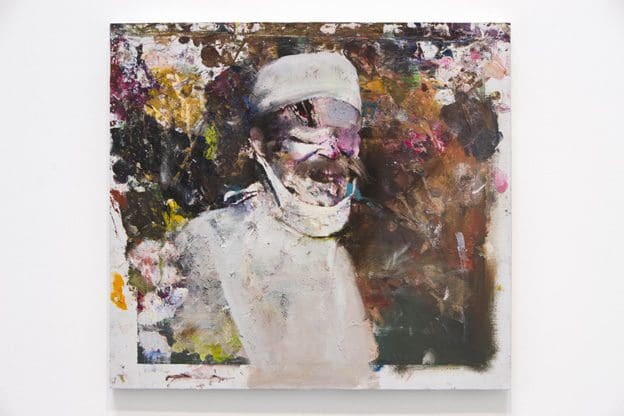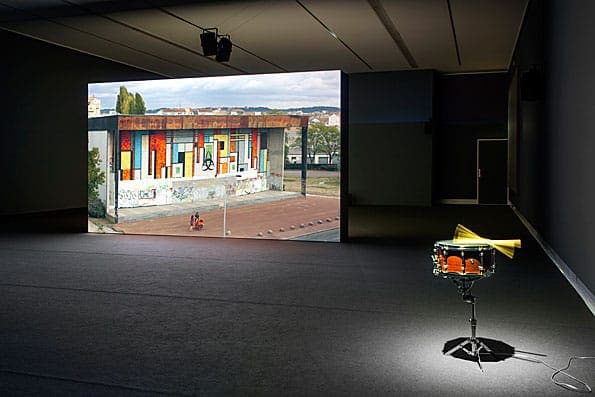To mark the recent home entertainment releases of Dylan Mohan Gray’s Fire in the Blood and David France’s How to Survive a Plague, FLUX will feature a two part interview special with the filmmakers to discuss tackling AIDS onscreen.
The last twelve months or so has been a busy spell for the subject of AIDS in both documentary and narrative filmmaking.
Last year saw the release of two documentaries – Fire in the Blood and How to Survive a Plague, followed earlier this year by Dallas Buyers Club.
In the words of David France his documentary How to Survive a Plague tells the story of “The movement of people with HIV and AIDS, as well as their advocates to bring about the 1996 drug revolution that made the survival of an HIV infection possible.” Similar to Gray’s Fire in the Blood, How to Survive a Plague is a film of not so much firsts for its filmmaker, but rather a first as France makes his directorial debut.
Having missed an opportunity due to scheduling conflicts to interview David for the theatrical release, FLUX was privileged to have an opportunity to put the documentary filmmaker in the interview chair where he discussed entering the documentary world, the hiatus of AIDS onscreen and its sudden emergence, the extent to which the story of AIDS is understood today, and How to Survive a Plague has transcended its story.
What was the genesis of How to Survive a Plague?
I am a long time journalist, and long form non-fiction writer. I started my career thirty years ago in response to the AIDS epidemic. I hadn’t planned on a life in journalism but I felt the need to go and ferret out some information that was extremely hard to find. So for most of my career I have been a health and science narrative writer. This has included frequent efforts to look at AIDS and to see what the issues are on the ground today, as well as how that fits in historically. A couple of years ago I began thinking that I would look back at the early days of the plague for lessons – what we have learned as well as to remind myself of what happened then. I went back and looked at some of the old footage shot by activists, citizen journalists, and people behind the curtain in the activist movement that was developing around the epidemic at a time when mainstream medicine and the government were paying no attention. The death toll was unchecked and mounting, and in that footage I saw an amazing opportunity to tell the story visually. It was something I had never done before, and so that’s how I put myself on the path of building a documentary for the first time.
Prior to Fire in the Blood, How to Survive a Plague and Dallas Buyers Club, if you were to mention the subject of AIDS in cinema, people would immediately recall Philadelphia. Why has the subject of AIDS emerged so suddenly again?
First let me explain why it went away. How to Survive a Plague is the story of the movement of people with HIV and AIDS, as well as their advocates to bring about the 1996 drug revolution that made the survival of an HIV infection possible. Once that happened; once the hospitals emptied out, and at least once people in the west had access to those drugs, then the horrific death march ended.
Then there was clearly a moment when everybody needed to start thinking about something else. It was fifteen years of a plague for which we knew nothing – there was no way to stop people from dying. People were just exhausted by the news and were just relieved about the revolution. For the next ten or fifteen years we didn’t talk about it much. Even the people such as me who were intensely, emotionally, medically and personally involved in the plague stopped talking about it. It isn’t a matter of post-trauma, as much as a matter of wanting to move onto something else, of wanting to push those memories into some conceived part of our lives. Only after that period of time have we started to circle back in a way and say “What happened? What did we go through? What did I witness and what can we learn from that?”
If you look back at the powerful literature that was created after the Holocaust, it only began to appear ten or fifteen years after the end of World War II. There is something to that gap which is almost necessary in order to give you the distance to look back, and to try to understand what the lessons are. What we learned, and what that mass death experience meant? What do we need to tell future generations about it?
Having now completed this documentary, in your opinion is the story of AIDS in America, and AIDS worldwide understood or are we in fact moving to a point of understanding the plague and those events surrounding it?
There is an understanding; there is a fact, and there is a truth. Those things took fifteen years to develop. Since 1996 when survival became possible, it didn’t necessarily mean that survival was likely. It went straight to the question of the access and cost of these drugs, as well as the paranoia around them, and the obstacles that have presented themselves within the last fifteen years. It is these obstacles that still make it less than likely that a person will survive an HIV infection. In the last couple of years we have seen some incredible activism as well as some great initiatives on the part of governments and non-governmental organisations. We assume drugs are now available to the majority of people with an HIV infection. A million people are alive today on the drugs that were developed in the course of the story of How to Survive a Plague. That is phenomenal and unparalleled. We have never seen anything like this before – expensive drugs made available on a lifelong basis to so many people. So yay right? It is an incredible project there, but there are generally another eight million people who have absolutely no access to the drugs. Those eight million people are going to die within nine to eighteen months after their first major opportunistic infection; just as they would have died in the period depicted in How to Survive a Plague’s archival footage.
How to Survive a Plague transcends the subject matter that you are dealing with to be a cautionary tale. We have to learn from the mistakes of the past, to not act slowly but to act with compassion, and not turn victims of disease into the “Other” and allow our xenophobia to compound the suffering?
That’s why I called it How to Survive a Plague. It is a blueprint to a new paradigm of grass roots activism. It picked up on certain things that came before, and the idea that you handle your own journalism when nobody else is doing it. Citizen journalism was seen in previous periods of history, and of course it is now all over the social media networks. But it also invented the idea that science was not the exclusive purview of the experts, and that a group of entirely marginalised people could find the power and the voice to break through that marginalization to accomplish incredible things. It is a story about human potential and civilisation, and that’s certainly a model that could be replicated in just about any other area. It has even been replicated in other health areas; probably in most patient populations where there is any sort of activism that is modelled directly on what Act up, The Treatment Action Group and AIDS activism in general innovated. Even How to Survive a Plague has been shown in underground screenings in Moscow to organisers of the Sporadic but not yet entirely effective pro-democracy movement that is vexing Vladimir Putin and his government. That’s a direct list from the history, techniques and strategy of AIDS activism. It’s interesting to see that it is not only a potential blueprint, but even an effective and useful one in the modern world.
What are your thoughts on creating a documentary that has moved beyond the story at its heart?
You think that what you are doing will find an audience or at least you hope so because otherwise you wouldn’t do it. I was grateful that the film found its audience. It’s being embraced on so many different levels – politically, cinematically, artistically and historically. To get all of that into a 110 minute package is certainly gratifying. For me I was impressed that a documentary could have so much power, and that power can be larger than the story itself. That’s been a great lesson.
Speaking with documentarians recently, opinion seems to be divided between those who believe this is a golden age for documentaries and those who take a less optimistic position.
I strongly feel it is the time for documentaries; the time for documentarians and that we are in a special moment. I know it may seem unreliable coming from a person who’s only made one documentary, and who has had only a tiny experience in this field. But the quality of the documentaries that are coming out is insane. We haven’t seen anything like the level of storytelling that is possible in the non-fiction format that is being executed. You see around the world year after year, and especially in these last two or three years that the standard of films that are making it through the festival and the awards circuit is higher than it has ever been. They are crossing over and finding audiences who were not watching documentaries in the past. They are winning them over on the artistic, storytelling and dramatic levels. It is amazing to see.
Looking ahead will you continue to work within non-fiction filmmaking?
I am just beginning work on a new documentary, and I’m finishing up a writing project on a major history of AIDS activism. I’m going to finish up my big major AIDS project and then move on.
How to Survive a Plague film – article and interview with David France by Paul Risker.
How to Survive a Plague is available to own now on DVD.


